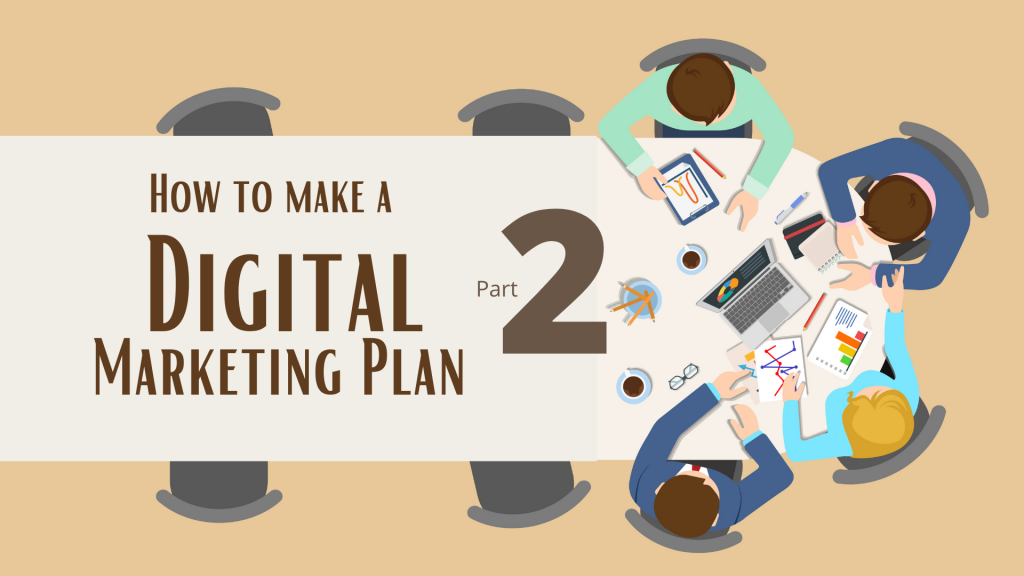
In the previous blog, I explained the four steps of how to make a digital marketing plan. To
continue reading this blog too to get complete knowledge about that topic. It will definitely help
you create a digital marketing plan.
05.Determine the budget for your digital marketing strategy.
The next step in developing the best digital marketing strategy for your company is to determine
your budget. The budget will specify how much money you have to spend on digital marketing
activities, as well as direct you to specific channels, strategies, and tactics. The amount you set
aside for digital marketing will depend on a variety of factors, including revenue, position
within the industry, previous results, goals, location, and profitability of a strategy, tactic, or
campaign.
How much money will you devote to increasing brand awareness? What about specific
campaigns and promotions? Will you set aside a portion of your digital marketing budget for
customer retention? Do you know how much money you should spend on SEO?
It is critical to plan your budget ahead of time. Maintain flexibility, however, in order to
capitalize on opportunities for increased SEO ROI. If you notice that a particular campaign isn’t
generating a positive ROI, you might be better off eliminating it. Similarly, if you notice that a
particular campaign (or channel) is yielding outsized results, consider shifting the budget and
allocating more funds to what’s working well. If you have a specific return-on-investment in
mind that is highly profitable, keep increasing the budget as long as your acquisition costs
remain below the target.
06.Establish your digital channels
Before you can create a content strategy, you must first identify the primary digital channels you
will use. Your channel selection should take into account your audience, goals, and budget.
Assume your goal is to increase targeted traffic to your website by 30%. One method is to use
PPC ads, which can provide you with an immediate boost. However, Google Adwords can be
costly.
Turn to more cost-effective channels, such as SEO and content marketing, to boost ROI. These
channels take longer to produce results, but they also have a much lower acquisition cost,
providing you with more bang for your buck. Furthermore, the effects of SEO and content
marketing compound over time, laying the groundwork for long-term, sustainable success.
Consider where your target audience spends the majority of their time when developing your
digital channels. If you work in a B2B industry, you might want to concentrate on channels such
as LinkedIn or webinars. If your target audience is younger, you might want to consider
Instagram influencer marketing. Concentrate on how you can provide value to your audience
through the channels they prefer.
Also, don’t assume that your audience is uninterested in great content. Some of the best content
marketing examples come from a diverse range of businesses with vastly different target
audiences.
07.Create digital marketing strategies and tactics.
Following the definition of your channels, you must develop the digital marketing tactics and
strategies that will be used within those channels.
For example, if you want to focus on search engine optimization, you must first decide which
keywords to target and how to target them. You could create a comprehensive content hub,
online courses, SEO topic clusters, or a collection of online tools. You could also decide to
provide more detailed, insights on upcoming trends, or content featuring celebrities.
Alternatively, if you’re focusing on B2B lead generation, you might want to create case studies
that highlight your results. Look for ways to differentiate yourself from the competition as you
plan your digital marketing strategies and tactics. You will struggle to stand out if you do what
everyone else is doing. The more crowded the market, the more difficult it will be to capture
attention and achieve true optimization across your digital marketing portfolio. Be true to your
brand in everything you do when developing your digital marketing strategies and tactics.
08.Make a marketing calendar.
A marketing calendar allows you to plan out when your digital marketing campaigns and
initiatives will be implemented. It also creates accountability, ensuring that you meet deadlines
and carry out the plan effectively throughout the year. A calendar also ensures that you reach
each of your audience segments on a consistent basis throughout the year.
Make a plan for the next 12 months and divide your calendar into each month of the year. This
will give you an overall framework as well as enough time to prepare and execute on each
delivery.
As an example:
You’ll be releasing a training webinar in January. Before you can release it, you must first
create a slide deck, a landing page, and social media graphics, among other things.
Throughout January and February, you will promote the training webinar through various
channels such as social media, email, video, and public relations.
You’re going to start a blog in March that will be updated weekly. To accomplish this,
you must decide on topics, assign them to writers, collaborate with a designer, create a
blog calendar, and organize videos to be embedded, and so on.
When making your calendar, be realistic. Allow yourself enough time to complete everything in
a timely and quality manner, and make certain that each deliverable is clearly assigned to a
specific individual.
09.Track the outcomes and key performance indicators (KPIs) of your digital marketing strategy.
The final step in developing a digital marketing strategy and plan is to measure your results by
defining metrics and key performance indicators (KPIs). You must compare the results of your
marketing efforts to both the baseline and the original goals. If the results are disappointing,
adjust and optimize before measuring again.
Make a point of measuring each channel so that you, as a marketer, can identify what is working
best for your brand and what may need to be reduced. Dashboards can keep your entire
marketing team up to date.
The process of creating a digital marketing strategy promotes marketing integration, which fuels
greater business impact. Customers will not be able to ignore your brand if you consistently
bombard them with messaging, offers, and calls to action. As a result of efficiently and
intelligently repurposing and atomizing your marketing assets, you will achieve more with less.
Whether your company is a well-established e-commerce brand or a brick-and-mortar, you must
have a digital marketing strategy. It takes time, effort, and coordination, but it is well worth the
effort. Your marketing will be far more effective, and you will achieve far better marketing
results for your company. So, create a digital marketing plan correctly and succeed with your
digital marketing activities well.
Author – Hiruni Kalinga


Please let me know if you’re looking for a writer for your weblog. You have some really good posts and I feel I would be a good asset. If you ever want to take some of the load off, I’d absolutely love to write some articles for your blog in exchange for a link back to mine. Please shoot me an email if interested. Regards!
I would like to thnkx for the efforts you have put in writing this website. I’m hoping the same high-grade website post from you in the upcoming also. In fact your creative writing skills has inspired me to get my own web site now. Actually the blogging is spreading its wings rapidly. Your write up is a good example of it.